A friend of mine said that the highlight of her college career was taking a semester to study abroad in a different country and that got me thinking about which country I wanted to spend my next 6 months in. Growing up in the suburbs of California I always longed to live in a modern megacity. Seoul, South Korea was a city many of my friends suggested and at the time I wasn’t well versed in Korean culture, K-pop, and cosmetics. I was torn between living in Taiwan and South Korea but ultimately ended up choosing South Korea because I wanted to get out my comfort zone and live in a different country I didn’t know the language. I wanted to take in all the sights and sounds that I couldn’t get back home in California.
Seoul has a special place in my heart and the months I spent living there was an experience I will never forget.
Full disclosure: On this travel guide I will reference separate websites I used for my trip through different travel agencies. I have not been paid or sponsored to post this content. The content below is purely based off my experience during my time there and using the services.
Getting to Know Seoul
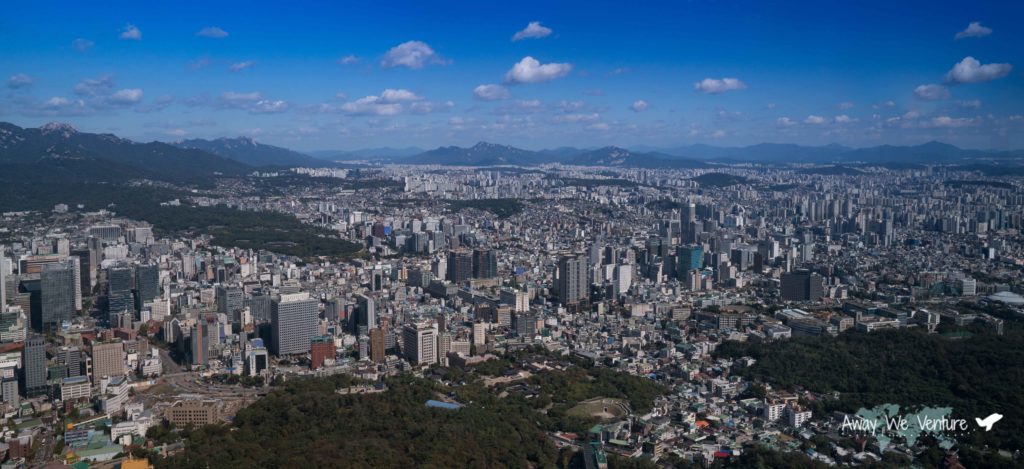
Seoul is the capital of South Korea. It is a fast-growing city that is paving its way into the future all the while preserving its past. It is home to more than 12 million residents (in Seoul alone) and houses the world’s fastest internet. Walking around Seoul you’ll encounter towering skyscrappers, places with rich history, and lots of things to do making it a really popular destination to visit. This in part makes it the fourth largest metropolitan city in the world not too far from New York, Los Angeles, and Tokyo.
Seoul is different from other cities in my opinion because of its urban landscape. There were days where I ventured away from my planned route and I ended up finding amazing cafes and interesting things in random neighborhoods. I once found a cafe in a small neighborhood ran by a young man who happened to make the most delicious french toast with ice cream ever! Things like Sheep cafe, raccoon cafe, and many other themed cafes will make you a coffee lover by the end of the trip. In a sense it reminds me of Tokyo but Seoul blends the old and the new seamlessly.
In most recent years Korea started making national headlines in the entertainment industry with K-pop bands entering US mainstream music such as BTS and viral videos like Psy’s Gangnam style really put South Korea on the centerstage. Many people around the world watch K-drama’s and listen to K-pop daily. South Korea is also home to some of the biggest tech companies in the world with Samsung, Hyundai, and LG being the most notable ones. Seoul is known for their obsession to beauty and you’ll find yourself seeing a cosmetic stores opening a couple stores down from each other. As a guy I can walk into these cosmetic stores to buy something and not feel scrutinized for it.
The food is definitely one of the the highlights of Seoul with a wide variety of assortments and selections!
- Language: Korean
Korea is somewhat of an English friendly country. A lot of the signs in South Korea are in English. Quite a few people will know English in Seoul. - Electricity Information
220V. The types of plugs they mainly use are Type C and Type F.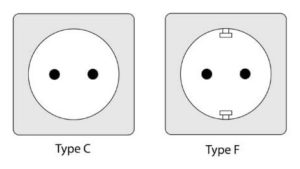
- Currency: Won (KRW, ₩)
- Types of Payment Options: Cash, Card
South Korea is trying to adapt and adopt to become a cashless society. Most places will accept credit/debit cards. Some older places may take cash only still.
Best Time to Visit
You’re probably asking yourself, “when’s a good time to visit South Korea?” South Korea’s landscape is very unique in its own way because it has very identifiable seasons. South Korea has: Spring, Summer, Fall, and Winter. Many people choose to come during Spring (cherry blossom season) and Fall (autumn season). Spring and Fall in Korea showcase dramatic changes in the color of leaves with Spring having pink blossoms and Fall having vibrant orange, yellow, and brown colors.
Spring (March – May)
Aside from fall, spring is another one of the best times to visit South Korea. Similar to Japan the weather is nice and cool and the city’s trees are filled with blossoming flowers. The spring weather changes every year so it’s kind of hard to pinpoint when is a definite good time to go but usually around late March to the second week of April is a safe bet. South Korea has a cherry blossom festival in Jinhae. It’s a 3-4 hour trip south of Seoul but its worth it to see cherry blossoms in full bloom.
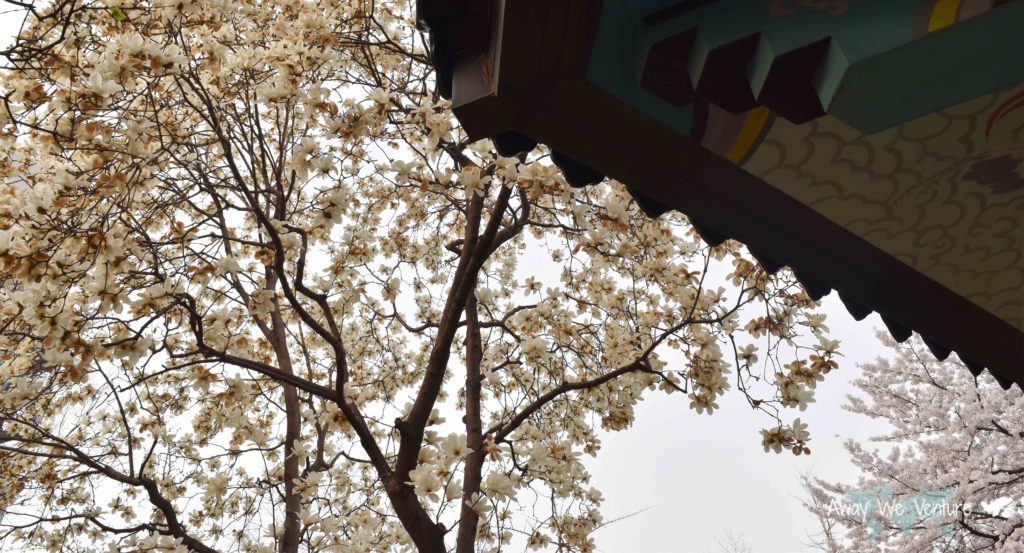
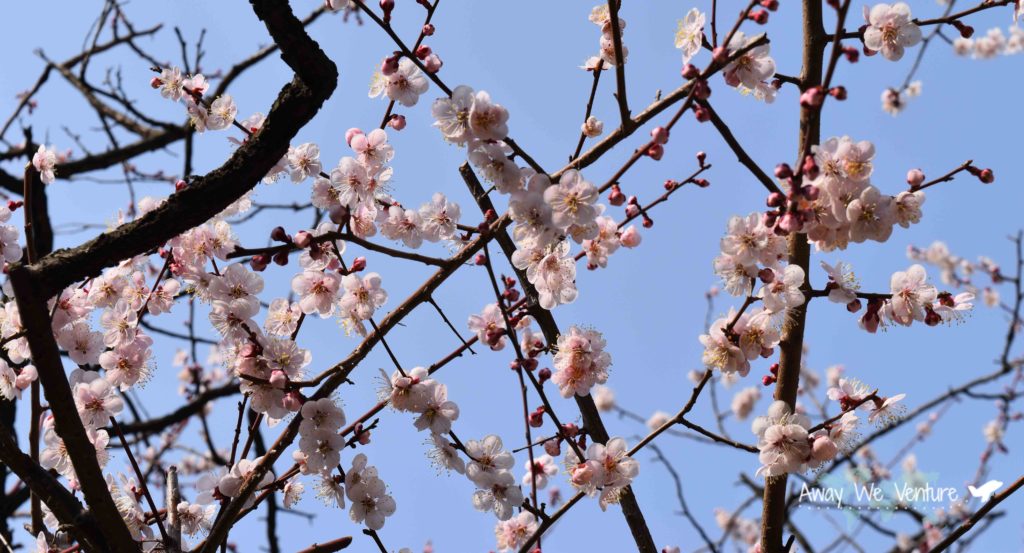
Summer (May – August)
Summer is quite hot in Seoul. During these months you can even expect hot temperatures, humid weather, and occasionally some rainfall. Flights to South Korea are at its peak season during this time. While many may stray away from visiting during this time that doesn’t mean its a terrible time to go. Korea makes up for it by hosting events throughout South Korea!
The annual Sinchon Water Gun Festival 신촌물총축제(End of June – Beginning of July) is becoming one of the popular events in Seoul. The event takes place in Sinchon (Yonsei-ro street) where the neighboring Yonsei University is. People break out water guns and fight aliens in the crowd.
Another popular event during this time is the Boryeong Mud Festival 보령머드축제 (Mid July – End of July). More information about the mud festival can be found by clicking here.
I visited Nami Island in the Summer and it was really pretty to see the trees all green alongside clear skies. The weather during this time reminds me a little bit of California beach weather.
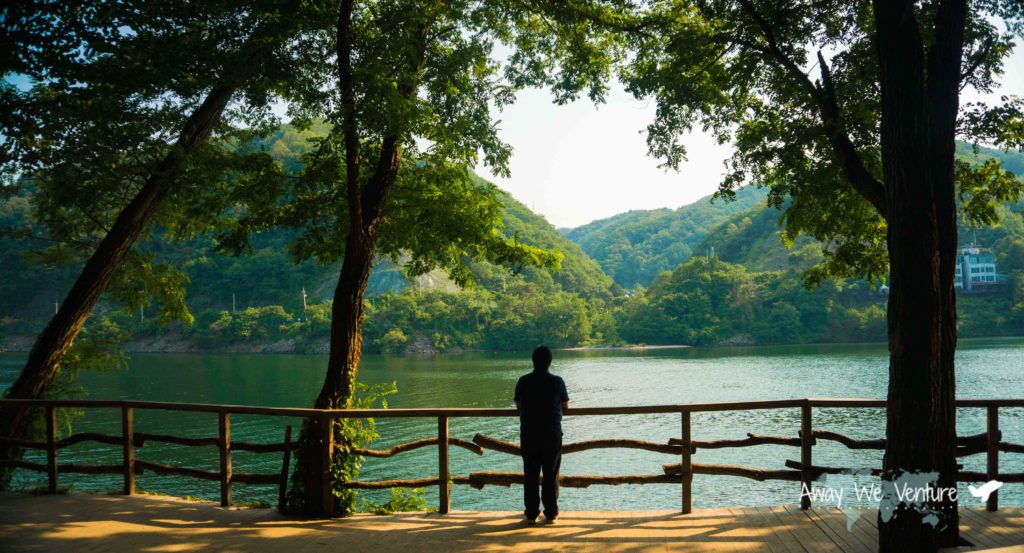
Fall (September – November)
The other popular season to visit South Korea is no doubt in the Fall (autumn) season. While cherry blossoms in the Spring is nice I honestly think South Korea’s best season is Fall because of how vibrant the mountains become and the different colors that emit from leaves. Autumn foilage in South Korea varies every year but a safe bet is to travel to South Korea during Mid-October/Early September.

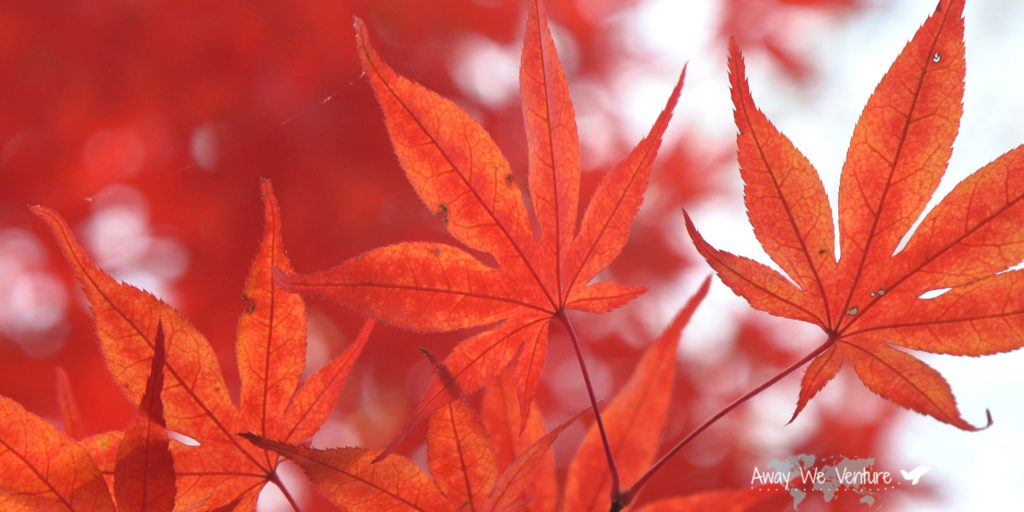
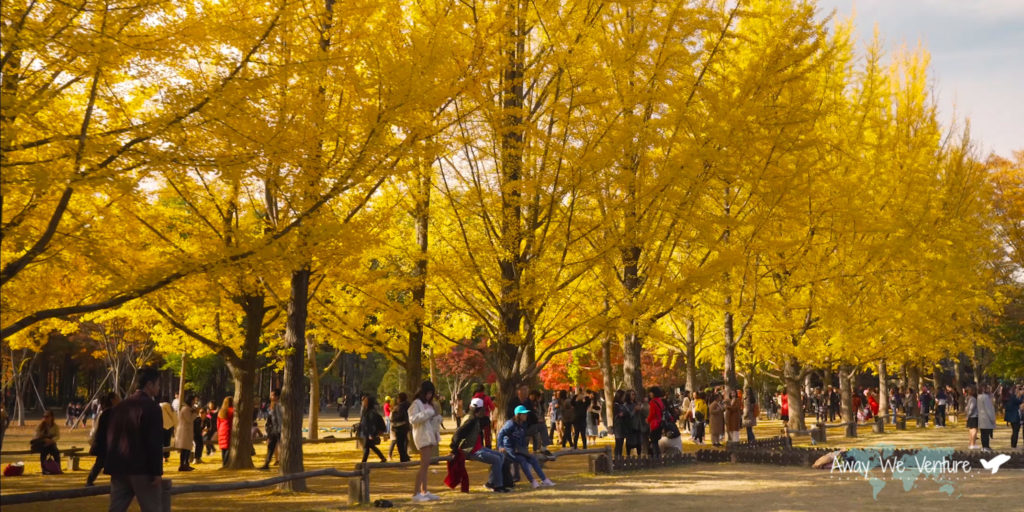
Winter (December – February)
If you plan on going to Korea to see snow, snowboard, or skiing then the best time to go is during the winter months. During this time Korea is known to have brutal cold temperatures all throughout the day. It’s not unusual to see people on the streets layered in tons of clothing to shield themselves from the cold weather. Being a Californian this is the first time I ever experienced living in a place where there was snow. I found it to be amazing but others who have lived in snow like weather said the opposite. Seoul has a couple skiing and snowboarding resorts such as High1 resort which is just a couple hours away.
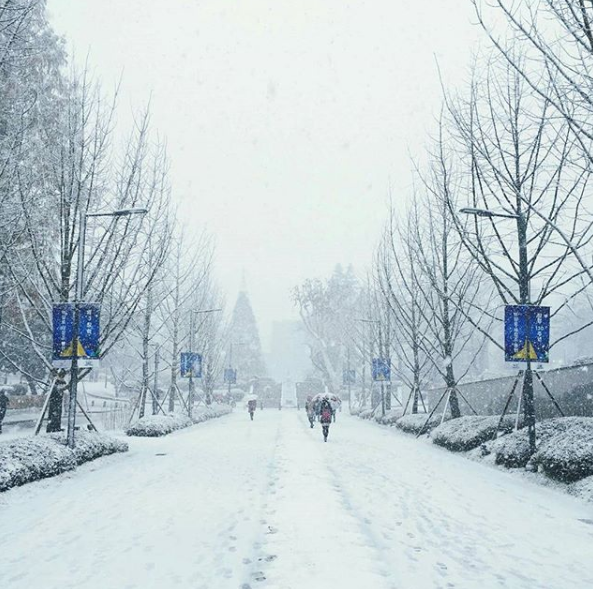
Traveling to Seoul
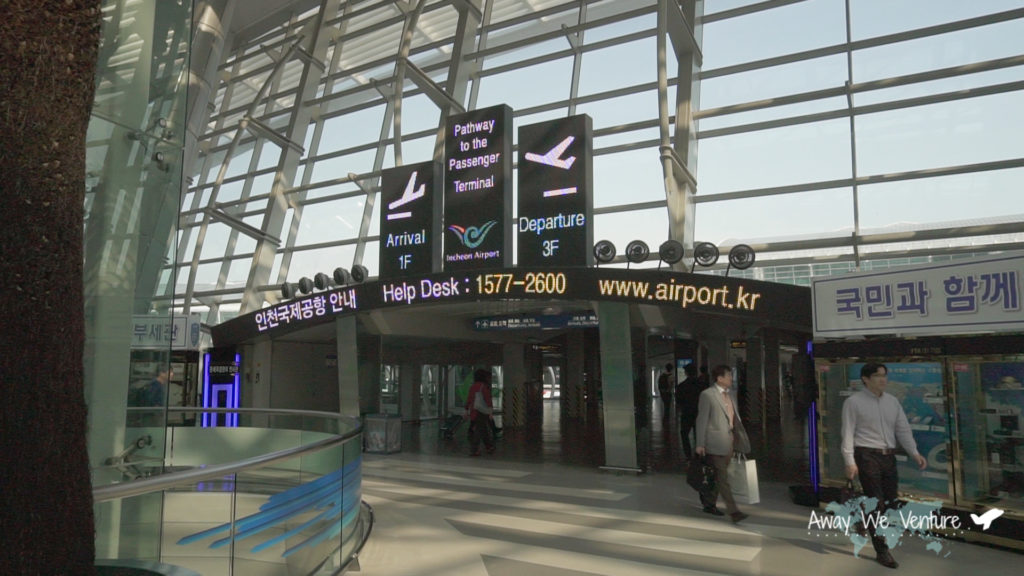
Seoul operates with only two major airports called Incheon International Airport (ICN) and Gimpo International Airport (GMP). Chances are if you’re flying from far away countries like USA then you’ll be flying into Incheon International Airport, which takes approximately 1.5 hours by bus/train to get from Incheon International Airport to Seoul. Gimpo International Airport is technically the closest airport to Seoul being only 35 minutes away, but its mostly for domestic flights with only some international flights from neighboring countries landing and taking off from there. If you can I would definitely choose to land in Gimpo if your airline carrier allows you to land there.
How to get from Incheon Airport to Seoul (options)
AREX Airport Railroad Express Train
AREX is by far the fastest way to get to the heart of Seoul from Incheon International Airport. Trains run daily and you can book your tickets in advance! Each trip from Incheon – Seoul takes around 43 minutes with trains running every 25-40 minutes. If you want to ride comfortably from the airport to the city definitely take the AREX. The only time you shouldn’t take the AREX Express Train is if your destination is nowhere close to Seoul Station Subway station. It has assigned seats with a bunch of areas to stowaway your luggage. Free wifi. Reserve your seat online since it’s cheaper going through a travel agency rather than paying right when you get there.
Price: $4.80 (USD) / KRW 6,400 one-way trip ticket through KKday
AREX Airport Railroad (All-Stop Train)
The second fastest way of getting to the center of Seoul is through the AREX Airport Railroad (All-Stop Train) which stops at every single station and takes approximately 58 minutes to reach Seoul Station. The biggest difference between the express train and the all stop train is that the seats aren’t too comfortable and they are plastic. Seating is not reserved but it is a cheaper option if you have to travel to your final destination that’s nowhere near Seoul Station where the express train ends.
Price: $3.72 (USD) / KRW 4,150 one-way fare
Airport Limousine Bus
The airport limousine bus is also another great option to get to Seoul. There are different buses that depart daily to different districts in Seoul. Your best bet is to check and see if the bus route stops in your area. It takes an average of 1 hour to 1 hour 20 minutes from Incheon Airport to Seoul depending on ending point.
The limousine bus is just outside the arriving terminal and in order to pay for the trip you need to buy a T-money card.
The seats are spacious and there’s plenty of room for luggage that is stowed underneath the bus. The Airport Limousine Bus is a great option if you land in Seoul around the time when the metro is offline (12am-5:30am). They run almost non-stop throughout the entire night to different destinations.
Price: $10-$15 (USD) / KRW 10,000-15,000 depending on the bus per way.
Website: Airport Limousine Bus Map
Taxis
Generally a taxi trip from the airport to Seoul will cost around $55 – 80 USD / KRW 57,000-83,000. This is quite expensive unless you split the fare amongst other people. As a single rider I chose not to take the taxi because of how expensive it was just for me.
Seoul operates with orange, silver, and black taxis.
Orange and silver taxis are generally the same rate. They’re the cheap fare taxis. I would advise you to stay away from any taxi that is colored black. Black taxis are considered luxury taxis and they will charge you quite a bit for a one way trip. When I studied abroad 3 years ago a student accidentally took a black taxi and her trip to Yonsei’s SK Global Dorms in Sinchon cost her nearly $95 USD / KRW 97,000.
Navigating Seoul (Apps and Maps)
Navigating Seoul can be quite tricky because Google Maps hasn’t been implemented here. While google maps can pinpoint address you type in Korean, it will not show you how to get to your destination. Much to my surprise people use subway stations and exit numbers as ways of navigating to shops and stores. This is because in Seoul everything changes pretty fast. Clothing and restaurants shutdown and new ones appear. Below are some apps I would suggest downloading in order to navigate around Seoul.
- MangoPlate (free | Apple iOS and Android)
Think of MangoPlate as the Korean version of Yelp. The functions are similar and you can search by which area you’re currently in. This is very useful in Seoul because as a foreigner. One of the coolest things about this app is that native Koreans living in Seoul also use and rate food places with this app so you’re guaranteed to find amazing food every time. You can search by the area you’re currently visiting. There’s even options built into the app to call a taxi through Kakao T to take you to the restaurant!
Currency Exchange
Currency exchange in South Korea is not regulated by the government. What this means is that independent stores will have different fluctuating prices. Before arrival to South Korea it would be ideal to exchange at least $100 USD to Korean Won (KRW) just so you can get to the city Myeongdong to exchange money. It’s known by locals and backpackers that Myeongdong has the best money exchanging rates in all of Seoul, you’ll see lots of stores exchanging money each with their own rate. At this point its just shopping for the best rate.
Based off my previous journeys to Seoul I found this place to be the most consistent with regards to giving me the closest market rate that Google says my USD is worth that day. I literally spent a whole afternoon going through Myeongdong looking for the best rates and to this day this place still doesn’t disappoint.
How to get to the money exchanging place:
- Get off at Myeongdong Line 4 Subway Station Exit 5
- Continue walking straight after you head up the staircase. Once you see the first big street (or Starbucks) turn right
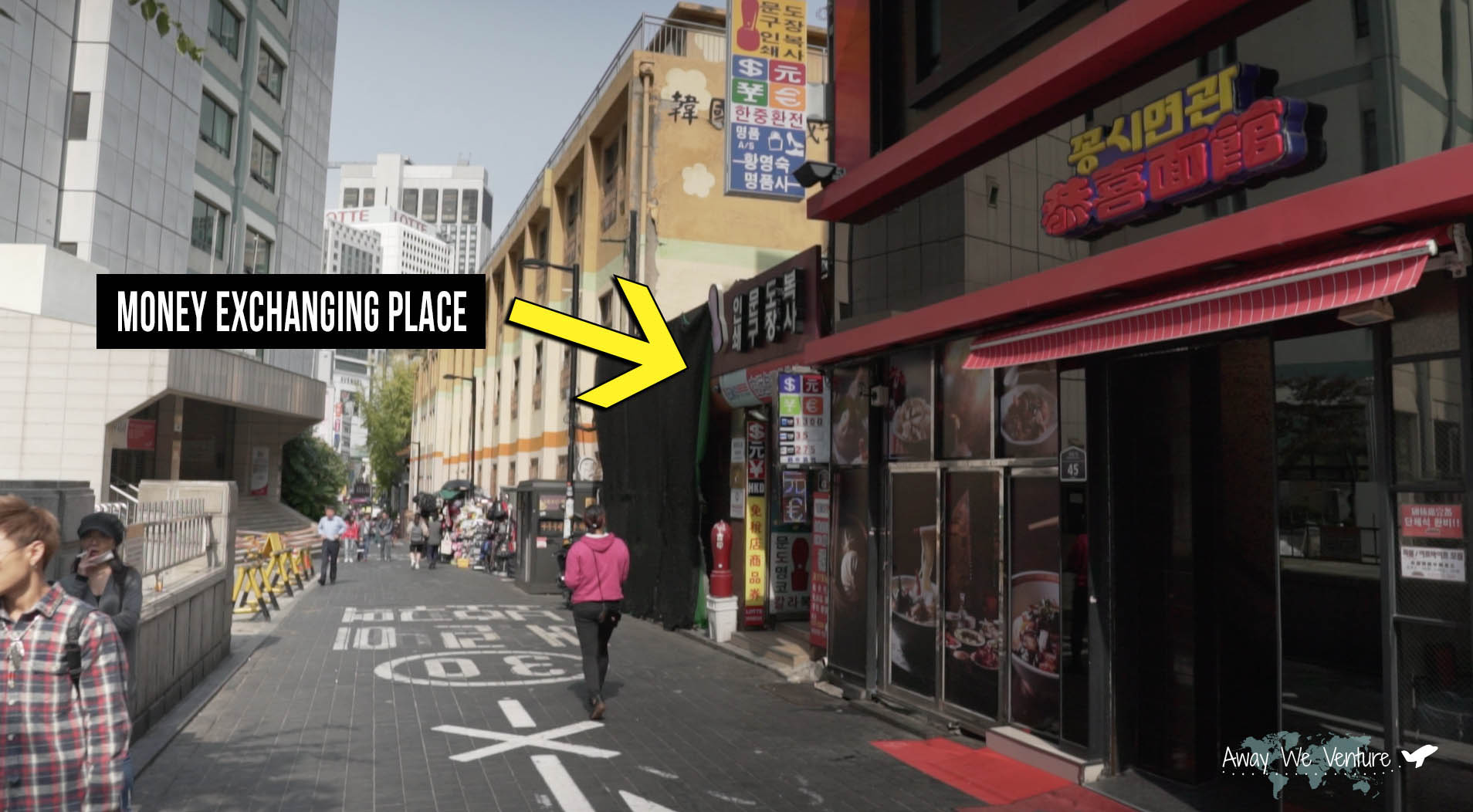
SIM Cards/WiFi Pocket Rental
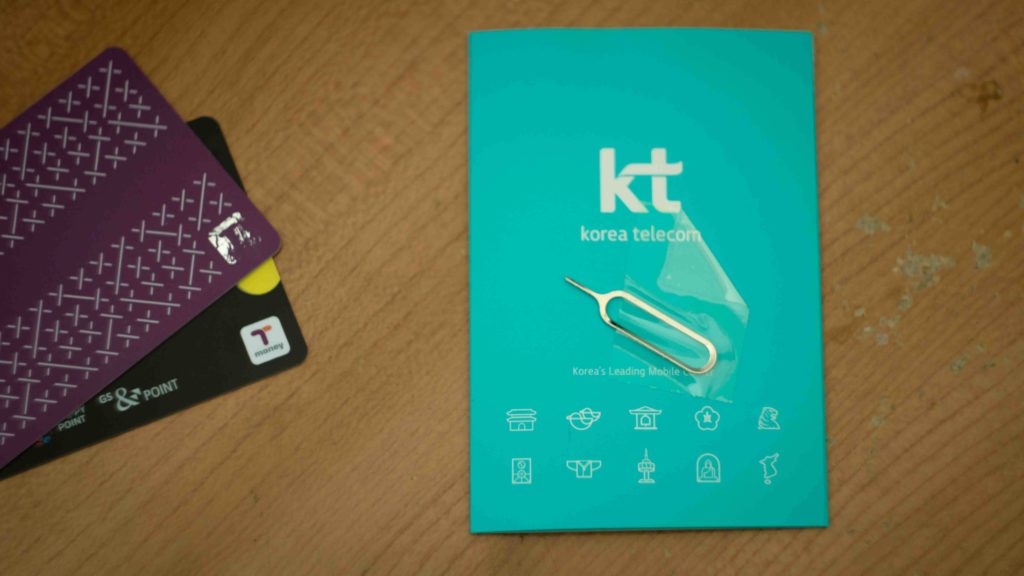
SIM Cards or WiFi Pocket Eggs are a definite must if you’re traveling in Seoul, South Korea. One of the main reasons being there’s not very many free wifi hotspots around the entire city. Most of the wifi hotspots that are available are only available for cellular customers.
I would personally choose the SIM card over WiFi Pocket Eggs and here’s why:
- Having a sim card in the phone means you have one less device you need to charge. Once your wifi egg’s power runs out you’re going to be scrambling to get it charged again just so you can use the internet on the device.
- My sister and her friends opted to use the WiFi Pocket Egg and their signal strength was literally only up to 10 feet. What this means is that if you happen to get lost and you aren’t near the person that has the WiFi egg then you’re kind of screwed.
- On most phones you can buy the sim card and it unlocks mobile hotspot sharing for the price of one sim card.
- The sim card doesn’t really lose signals in the underground subways. For some odd reason the pocket wifi does sometimes.
The only downside to the SIM Card is that you need a cell phone that is unlocked or paid off on your wireless carrier back at home. If you’re on a tight budget a WiFi Pocket Egg is a great deal! Just make sure you don’t venture too far from the person who has the WiFi egg.
NOTE: For the Wifi Egg rental you will have to put a credit card down as a deposit for the full price of the device in case it gets damaged or broken during your trip.
You can reserve SIM Cards and WiFi Pocket Eggs through sites like Indiway or KKday. For my trip I used Indiway. I literally reserved 2 days before I arrived in Seoul and at the Incheon Airport I just showed my confirmation page and got my SIM card fast and simple. Most of the paperwork is already filled out so all I really had to do was pay and sign. Their pickup counters are open 24/7 so if you have a red eye flight into Korea you can still pick it up. If you decide not to reserve online beforehand be prepared to probably pay at least $7-10 dollars USD extra at the counter. I’ve always used the carrier KT Olleh in Korea and its never let me down. For 30 days I spent approximately $55 USD.
SIM Card packages are counted by days (1/5/10/30) with unlimited data and incoming text/calls.
I would definitely shop around because sometimes different travel agencies have different promotions.
SIM Card via Indiway
SIM Card via KKday
WiFi Pocket Egg packages are counted by days and only offer unlimited data
WiFi Pocket Egg via Funtastic Korea
WiFi Pocket Egg via KKday
Subway Transportation Cards (T-Money)
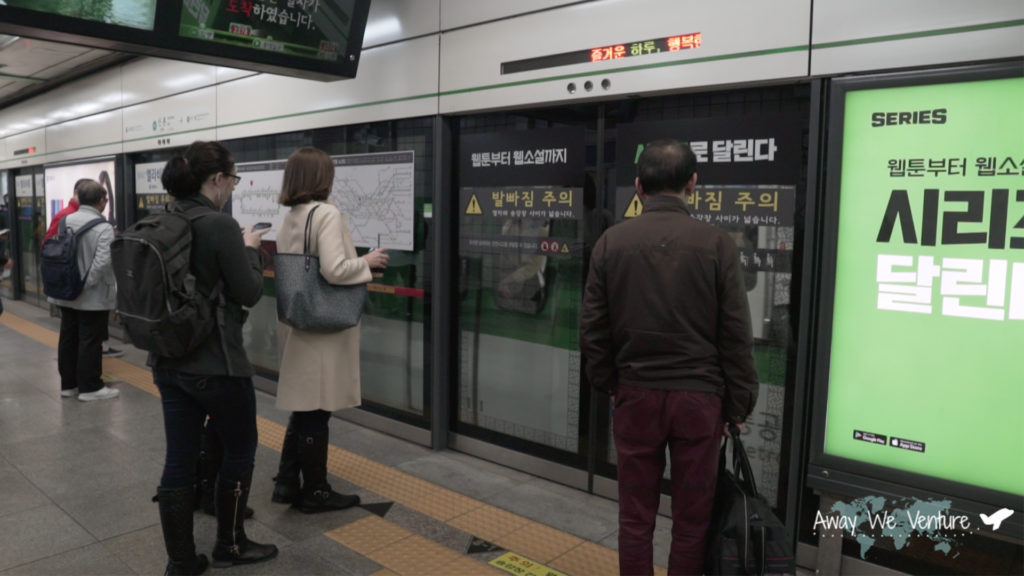
The subways in Seoul are very efficient! You can literally go from being in the heart of the city to the countryside rural areas outside of Seoul with literally $4 USD one way. In order to use the subways and buses you’ll need something called a T-money card. One of the cool things about the T-money card is that it is so integrated into Seoul that you can use this card to pay for subways, buses, and even taxis!
The first time you land in Seoul you’ll probably be overwhelmed by its subway map, but honestly as long as you remember the name of the destination, what line number, and the subway exit number you will be fine. Alternatively you can download the apps I mentioned above for easy navigation around Seoul.
While there are single journey tokens, its a good idea to spend money and invest in a T-money card. The card makes it easy to reload your balance and it gives you a 100 KRW discount on rides.
USING APPLE PAY As of Summer 2025, Seoul Metro is currently introducing Apple Pay which can be used with Apple’s Express Transit function so you can link a credit card to pay for your rides. You would tap the phone in the terminals designated for apple pay on the turnstiles.
PURCHASING a T-Money Card is really simple. Any convenience of the convenience stores in South Korea such as GS25, CU, Ministop (to name a few) will sell these cards. When purchasing these cards just go up to the register and say “T-money” and they will usually know that you want to purchase a new card.
There are also different types of tourist T-money cards only available to foreigners. I’ll explain those cards below.
RELOADING any of the cards below requires cash. The metro stations and convenience stores do not accept credit/debit cards. You can either reload at the subway station machines (machines have language options) or go to a convenience store such as GS25, CU, Ministop, and give them the T-money and physical cash amount you want to reload and say “T-money” and they will instantly load it into your card.
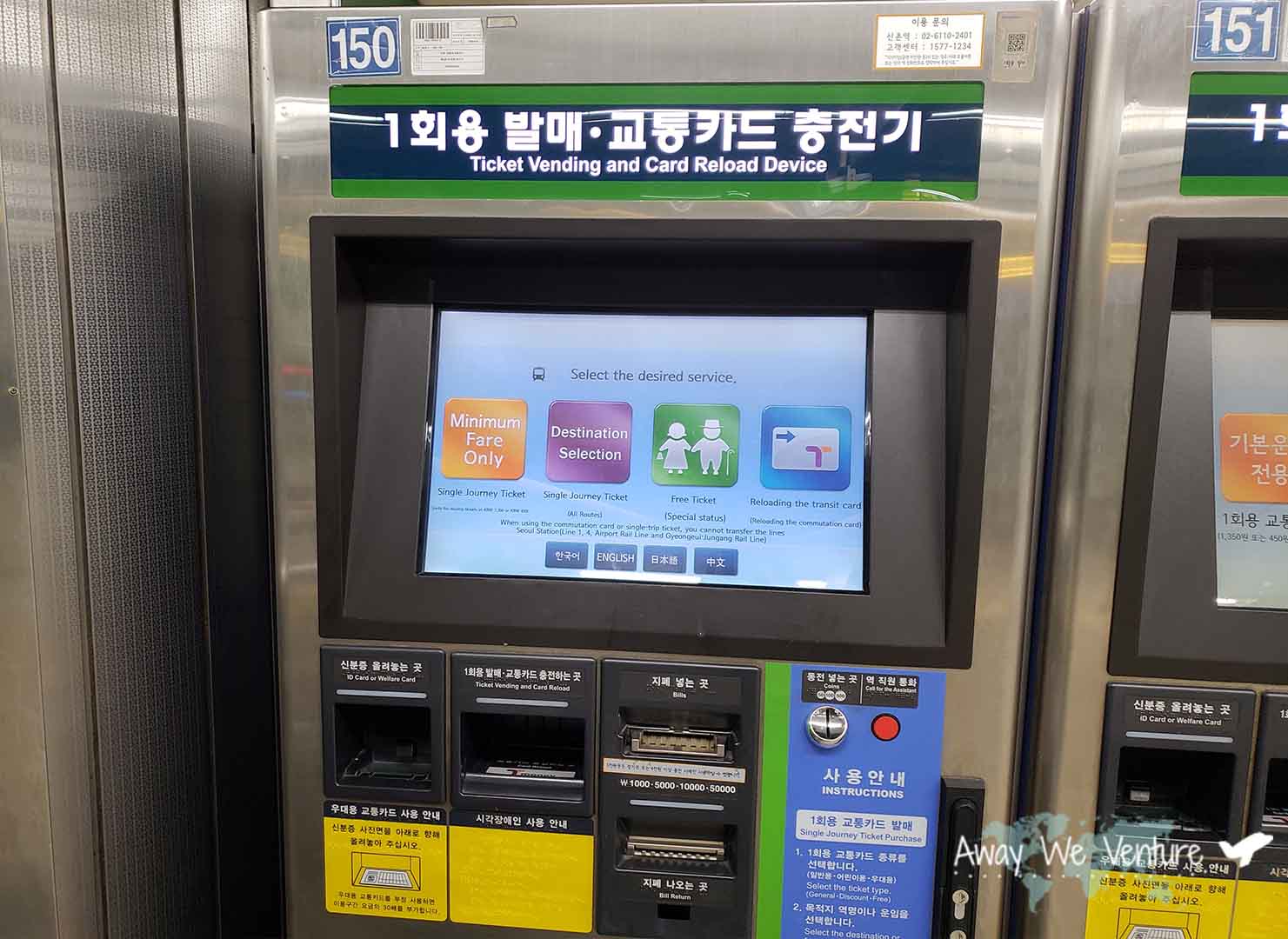
HOW TO USE
When you taking public transportation you must tap your card boarding on/off subway and buses. One of the main reasons why you want to tap on and off destinations is because if you transfer lines (ie. between subway and bus) your transfer will be free or discounted if you board a different line/bus within a 30 minute time span.
SUBWAY
- Place your card over the sensor located on top of the turnstile until it beeps. The display on the gate will show you how much was charged and how much is remaining on your card at the bottom. If you transfer lines/buses you may see the amount charge be “0”. Tap the card again at the turnstile once you’re at your destination and you will be able to exit.
BUS
- When you enter the bus place your card on the sensor where the bus driver is until it beeps. The sensor will show you how much was charged on the top and your remaining balance on the card at the bottom. Before getting off the bus place your card at the sensor near the exit rear doors until it beeps. If you don’t tap your card before you get off you will not get transfer discounts.
- Be sure to load enough money before taking the bus or else you risk having to find a reload station and being denied entry.
TAXI
- Most taxis in Seoul will have the T-money logo in its car. Once you get to the destination let your driver know that you want to pay with T-money card. They will instruct you to place your card on the terminal and the taxi fare will be automatically deducted from your transportation card.
- Be sure to load enough money before taking the taxi or else you risk having to use alternative methods to pay for the taxi ride.
There are different types of T-Money Cards available each catering to specific needs:
Climate Card (Unlimited Seoul Metro/Bus Pass)
MPASS Card (Metropolitan Pass)
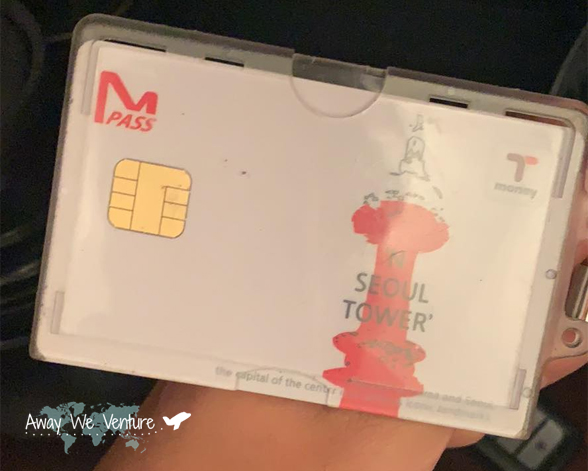
The Metropolitan Pass or MPASS is a type of transportation card specifically designed for international tourists traveling around the Seoul and Jeju area. One of the caveats of this card is that it offers 20 subway/bus rides a day during the duration of the pass.
Once those 20 rides a day are used up you can reload money into the card since it acts like a T-Money Card.
NOTE: MPASS cannot be used to pay for taxis and convenience stores will not accept it as payment. MPASS requires a 5,000 KRW deposit. Users will receive 4,500 KRW refund once they return their card.
Pricing varies by day. You can choose from 1 to 7 days.
- 1-day pass 15,000 KRW
- 2-day pass 23,000 KRW
- 3-day pass 30,500 KRW
- 5-day pass 47,500 KRW
- 7-day pass 64,500 KRW
You can order these cards at the Airport and various locations in Seoul. For more information on these cards click here.
SEOUL-U Discover Seoul Pass (24/48/72 Hours)

For those that are staying in Seoul for 24, 48, and 72 hours and want to take advantage of all the sights and sounds Seoul has to offer then look no further than the Discover Seoul Pass. The pass was created by Seoul Tourism Organization and the Seoul Metropolitan Government to experience Seoul easily. It doubles as admission ticket and T-money card to take Seoul’s vast transportation network. This card basically saves you a bunch of money on attractions which would normally cost ~$10 USD entrance fee at every attraction.
Pricing starts at around $31 USD (24 hours) / $44 USD (48 hours) / $61 USD (78 hours) at the time of post. You can order your pass by clicking here.
One of the nice things about this pass is that you can order the pass online and pick it up literally at the Incheon/Gimpo Airport after you land!
Some of the benefits include:
- One free ride on the AREX Express Train (From Incheon Airport to Seoul Station)
- Access to Seoul Bike (Seoul’s Bike Sharing Network throughout Seoul)
- Free admissions to 35 Tourist Attractions
- Discounts on certain Attractions
Free Attractions (one time admission) include:
- Gyeongbokgung Palace
- Changdeokgung Palace
- Changgyeonggung Palace
- Deoksugung Palace
- Jongmyo (Royal Shrine)
- Seodaemun Prison History Hall
- Coreana Cosmetics Museum
- HANBOKNAM
- Leeum Samsung Museum of Art
- Museum Kimchikan
- Namsangol Hanok Village
- Namsan Seoul Tower Hanbok Experience Center
- National Museum of Korea
- National Museum of Modern and Contemporary Art, Seoul
- Seoul Battleship Park
- Simone Handbag Museum
- COEX Aquarium
- Figure Museum W/ Alive Museum
- Football Faentasium
- Grévin Museum
- MBC WORLD
- N Seoul Tower (Observatory)
- Running Man Thematic Experience Center Ep.1: Find the Treasure
- Sealala
- Seoul Animation Center
- Seoul Zoo & Sky Lift
- SMTOWN Theatre(coexartium)
- SMTOWN@coexartium (SM Museum)
- Trick Eye & Ice Museum
- AREX Incheon Airport Express
- Seoul Bike
- Seoul City Sightseeing Bus:Downtown Palace Namsan Course
- Seoul City Sightseeing Bus: Dongdaemun Course
T-Money Card
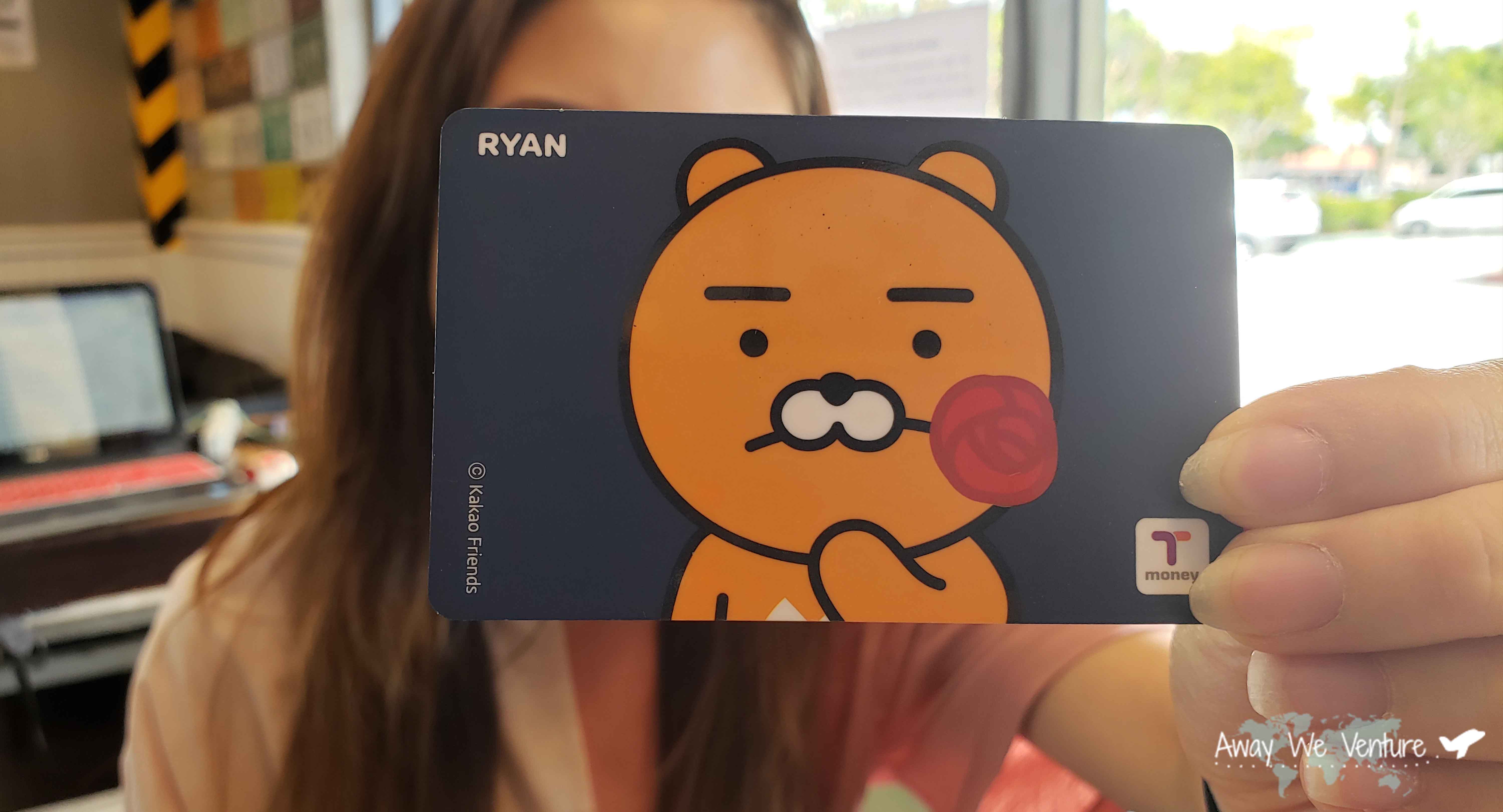
The regular T-money card is available for purchase at convenience stores such as (GS25, CU, Ministop, Buy The Way, etc.) Look for the cards with the T-money logo.
Price will range from 2,500 KRW. They come in different shapes and designs. Lets say you want a cute Kakao lanyard that has t-money functions expect to pay more.
These regular t-money cards do not yield any discounts on attractions. You can use these to pay for rides on the subway, taxi, and bus. You can also use these at participating restaurants and stores that take T-money as a form of payment making it one of the most versatile cards to have if you do not want to carry cash on hand.
Places to Stay
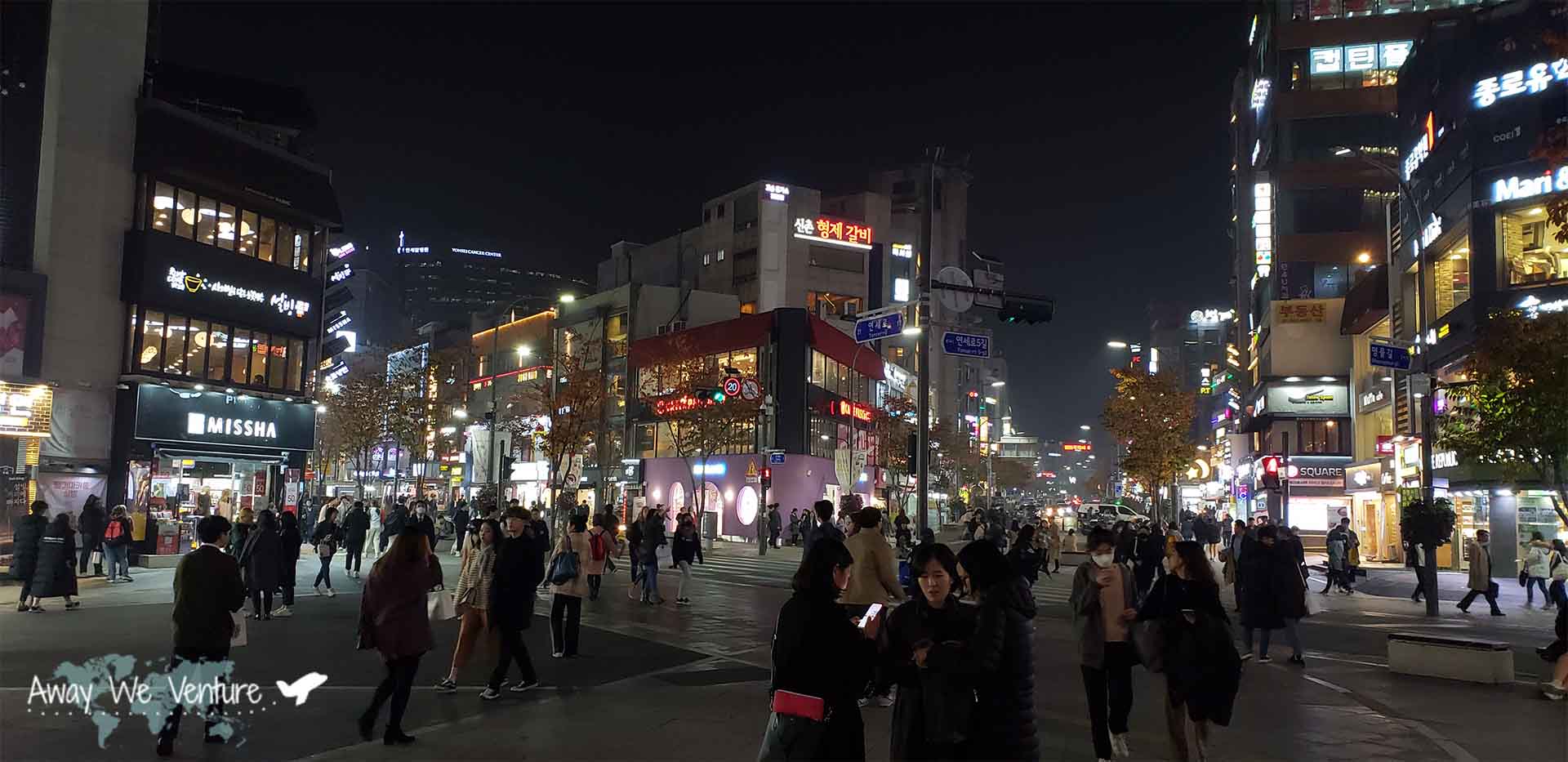
Seoul has various districts and each area has its own unique characteristics! Below are some of the places I would recommend staying in.
- If you love the night life I would definitely recommend staying in Hongdae. Hongdae has become one of the busiest areas with tons of restaurants & cafes, bars, and clubs. It gets a little noisy at night so if you’re a light sleeper don’t stay here. There are a ton of great Airbnb spots in this area.
- If you want to live amongst locals like I do then Sinchon area is the place for you! While it may not look touristy as the other places listed here there’s a sense of living amongst locals and not tourists that is appealing. Sinchon is great because its a college town so there’s an abundant amount of restaurants and bars. Sometimes there’s events on the main street in Yonsei so they close it off for special events (almost every weekend). I would recommend staying at an Airbnb here.
- If you want to stay close to all the tourist attractions be prepared to pay a little bit more to stay in Myeongdong. Myeongdong is catered to mostly tourists so hotels and stores are quite expensive. You’ll probably have a nice view of the city though!
- Dongdaemun area is also another popular option to stay in because of its close proximity to other tourist destinations. Its slightly cheaper than staying in Myeongdong but has almost the same atmosphere.
Things to Do
There are many things to do in Seoul. So much that I will have to break it down by intensity level. You can click the links below to jump to each section.
- Low Intensity
- Medium Intensity
- High Intensity
Low Intensity Activities
Lotte World
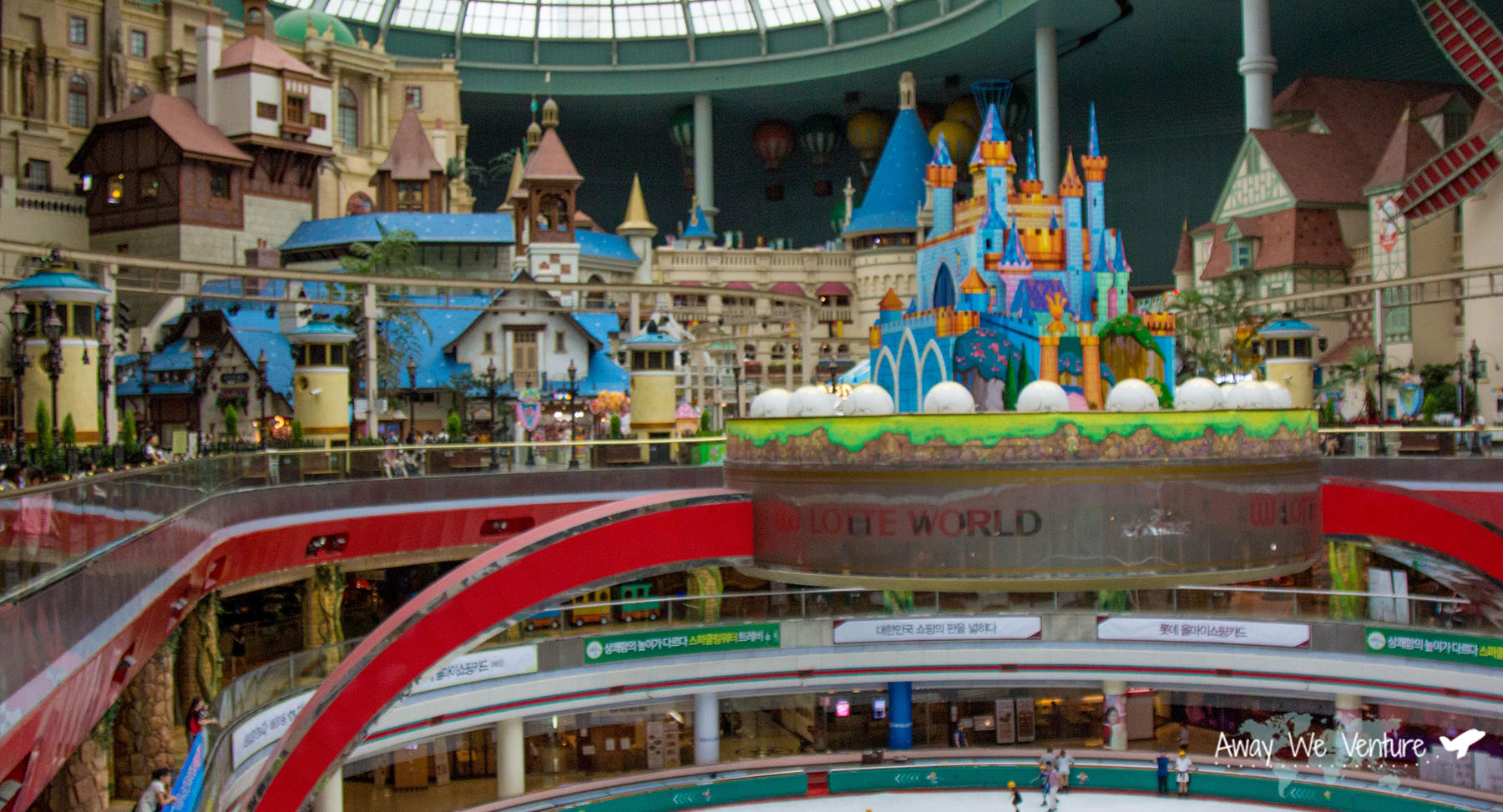
One of many amusement parks in Seoul, Lotte World is comparable to Disneyland in California. Lotte World is very easy to travel to through the Seoul Metro subway system. Most of the rides are tailored to children with the exception of several high intensity rides. What makes this amusement park very unique itself is that most of the park is indoors. Make sure to catch the drone light show at night!
Location: Jamsil Station (Seoul Subway Line 2,8) Exit 4
Seoullo 7017 Sky Garden
Built on top of a highway overpass, Seoullo 7017 (also known as Seoul Skygarden) is a one of a kind type of park. It’s elevated and linear. At night the walkway lights up with different colored lights making it really nice to stroll around at night. The park connects with Seoul Station and allows people to travel to different areas without crossing streets. With Seoul’s rapid urbanization, the park takes a step towards being more eco-friendly. The park is 983 meters long and accommodates a wide variety of plants, flowers, trees, and shrubs.
Location: Seoul Station (Seoul Subway Line 1,4) Exit 2 or 8
Gyeongbokjung Palace
Common Ground
Meerkat Cafe
Raccoon Cafe
Dog Cafe
Sheep Cafe
Medium Intensity Activities
Hongdae Trickeye & Ice Museum

The Hongdae Trickeye Museum in Seoul is a definite must to
Ganchon Rail Bike
Nami Island (Naminara Republic)
Renting a Bike. Riding in Seoul Forest
High Intensity Activities
Suwon Hwaseong Fortress
Zip Lining – Nami Island
Bungee Jumping – Nami Island
ATV – Gapyeong
Day Tours from Seoul

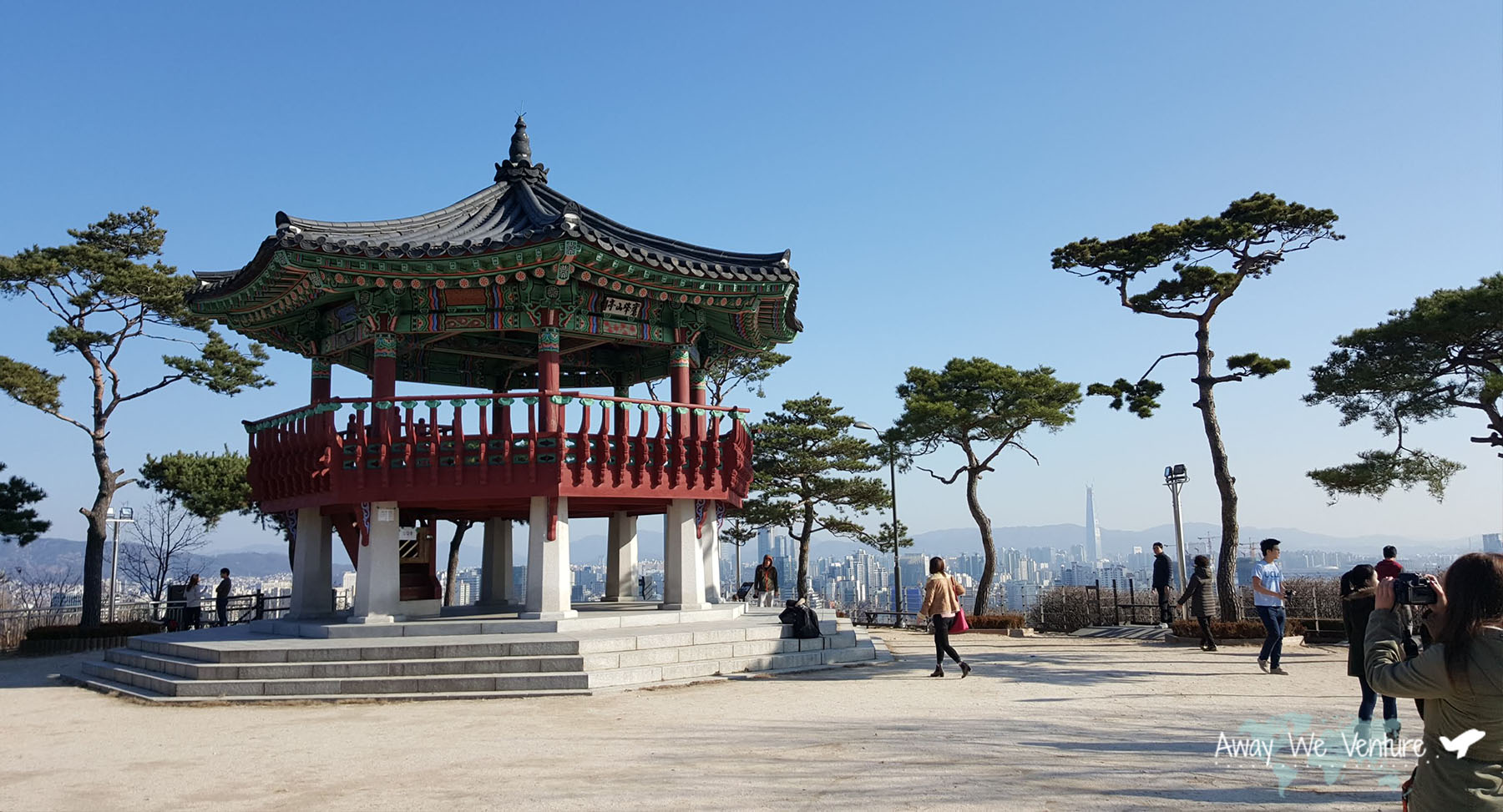
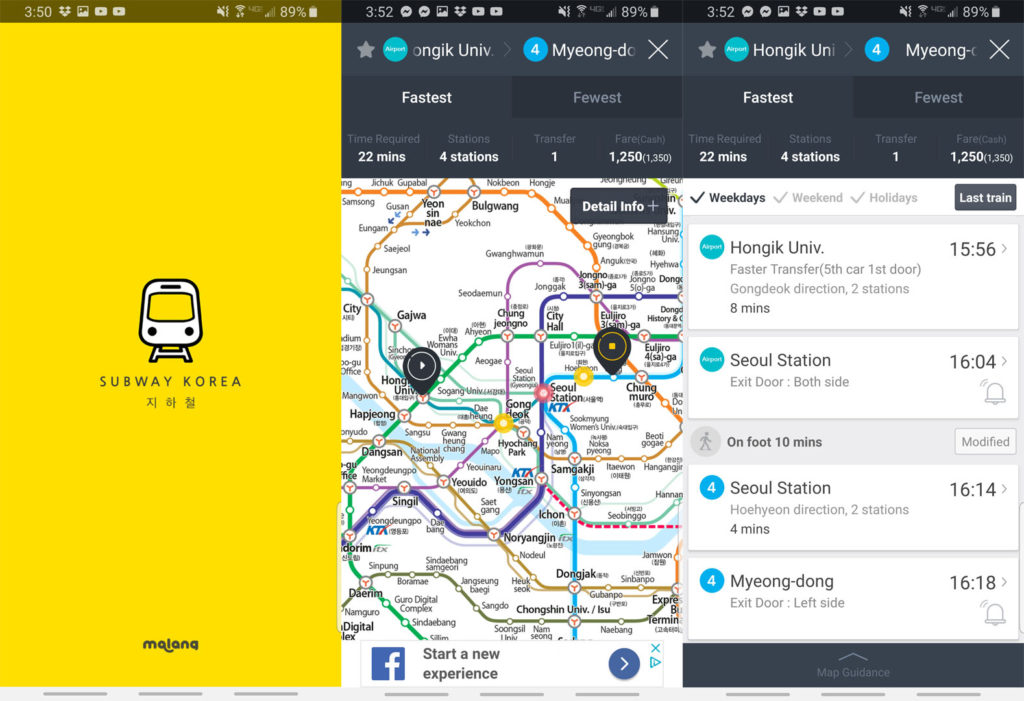
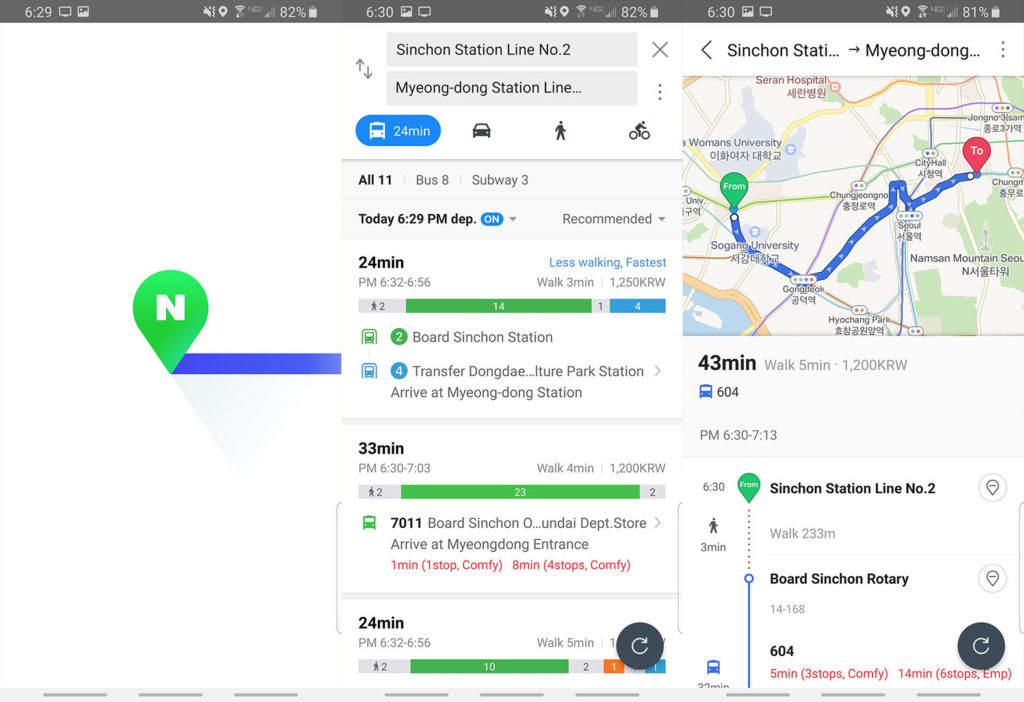
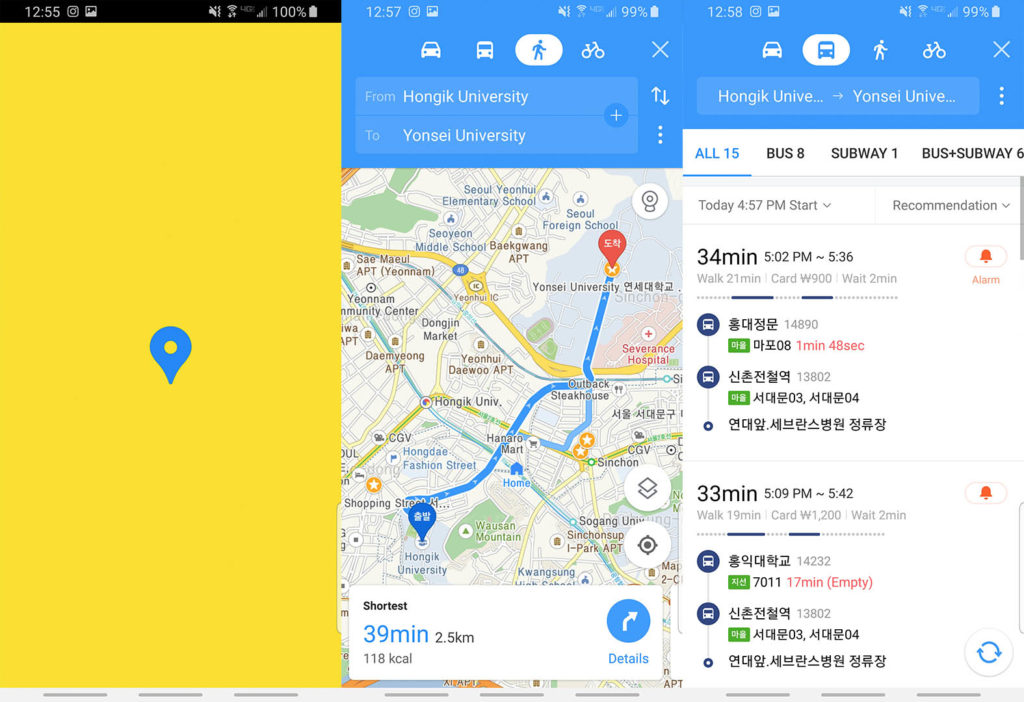
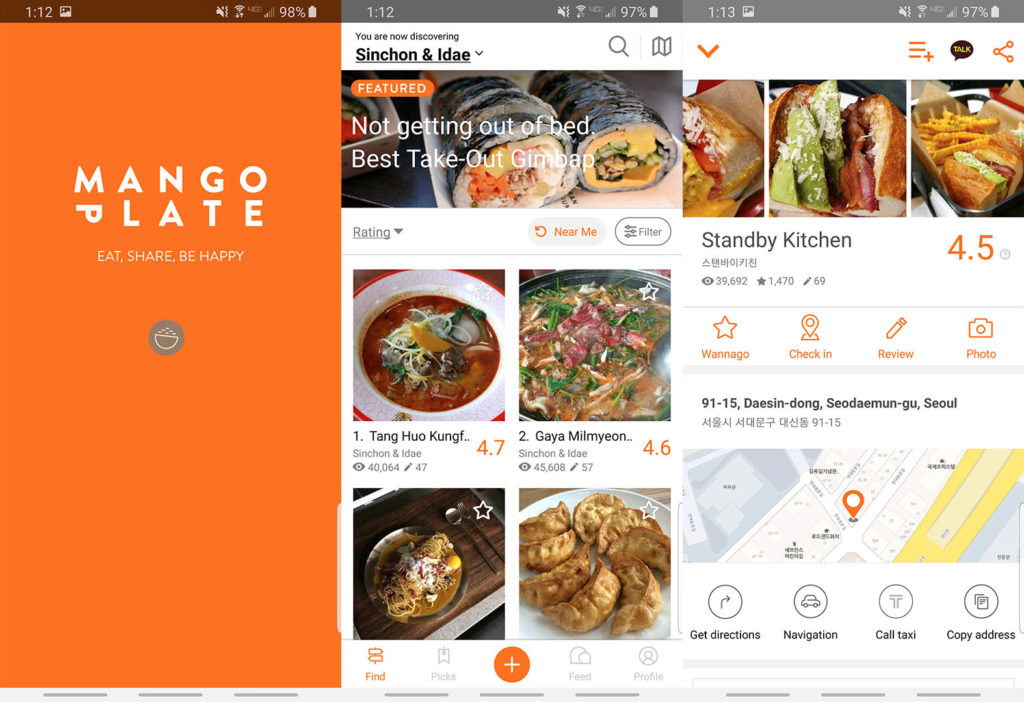
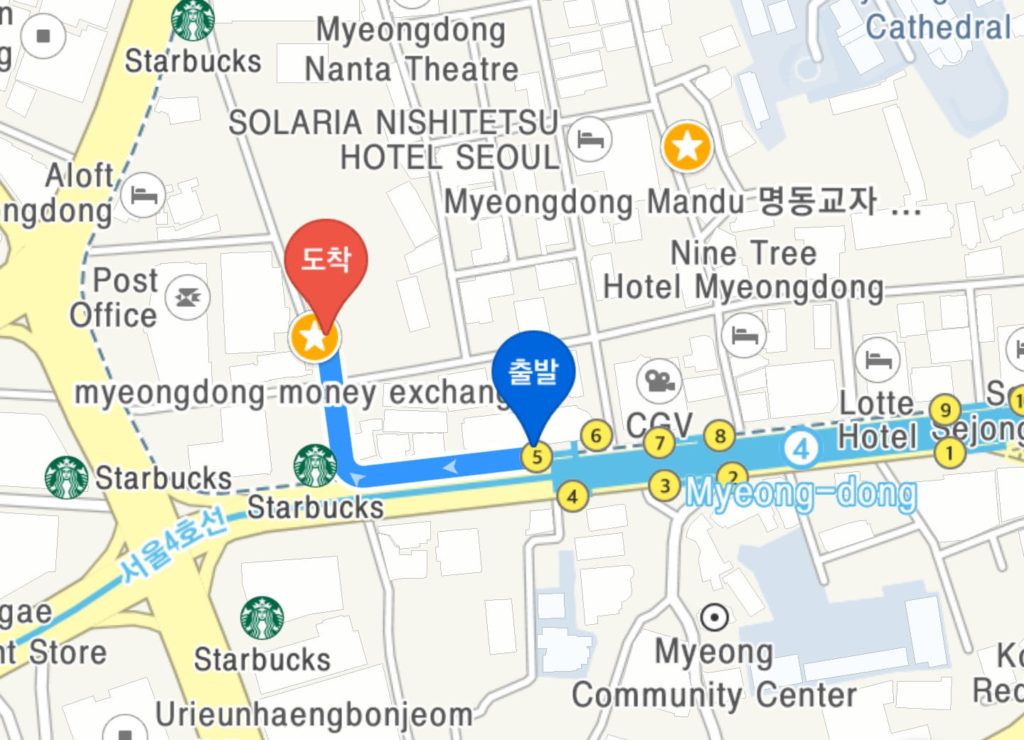
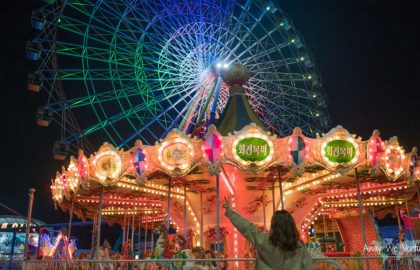

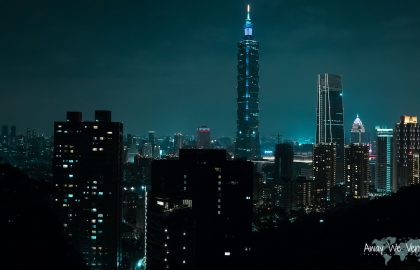
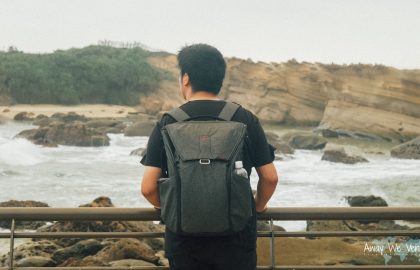
2 Comments
DOES THIS WORK?
Ziplining for $20?! thats a steal